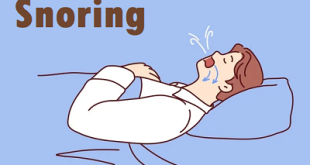Definition
Sporotrichosis is an infection caused by a fungus called Sporothrix schenckii. The fungus lives throughout the world in soil, plants, and decaying vegetation. Cutaneous (skin) infection is the most common form of infection, although pulmonary infection can occur if a person inhales the microscopic, airborne fungal spores. Most cases of sporotrichosis are sporadic and are associated with minor skin trauma like cuts and scrapes; however, outbreaks have been linked to activities that involve handling contaminated vegetation such as moss, hay, or wood.
Sporotrichosis
Epidemiology
Sporotrichosis occurs worldwide, with focal areas of hyperendemicity. The global incidence is unknown. In the highlands of Peru, the incidence of sporotrichosis is approximately 1 case per 1000 people. China is a serious endemic region. Epidemics have been described in western Australia, Brazil, and South Africa.
Types of Sporotrichosis
Cutaneous (skin) sporotrichosis is the most common form of the infection. It usually occurs on a person’s hand or the arm after they have been handling contaminated plant matter.
Pulmonary (lung) sporotrichosis is very rare but can happen after someone breathes in fungal spores from the environment.
Disseminated sporotrichosis occurs when the infection spreads to another part of the body, such as the bones, joints, or the central nervous system. This form of sporotrichosis usually affects people who have weakened immune systems, such as people with HIV infection (see Risk & Prevention).
Risk factors
- Wound contaminated with soil and organic debris.
- Immunosuppression (eg, corticosteroids administration) is likely to increase the risk of disease development, progression, and/or recurrence.
Contagion and Zoonosis
Although zoonotic potential exists, there are no reports of transmission from an infected horse, presumably because tissues from infected horses have fewer numbers of organisms compared with tissues from infected cats.
Associated Conditions and Disorders
- Sporadic infection affecting a number of susceptible hosts, including horses, mules, cattle, dogs, cats, rats, mice, domestic fowl, and humans.
- Similar to horses, the most common form of sporotrichosis in humans is cutaneolymphatic.
- In dogs, the most common forms are cutaneous and cutaneolymphatic; in cats, the disseminated form occurs in addition to the other two.
Causes of Sporotrichosis
Sporotrichosis is caused by a fungus called Sporothrix schenckii. Sporotrichosis usually begins when mold spores are forced under the skin by a rose thorn or sharp stick, although the infection can begin in apparently unbroken skin after contact with hay or moss carrying the mold. More rarely, cats or armadillos can transmit the disease. In rare cases, the fungus can be inhaled or ingested, causing infection in parts of the body other than the skin.
Microscopic view of Sporothrix schenckii
Who Gets Sporotrichosis?
People who handle thorny plants, sphagnum moss, or bales of hay are at increased risk of getting sporotrichosis. The infection is more common among people with weakened immune systems, but it can also occur in otherwise healthy people. Outbreaks have occurred among florists, plant nursery workers who have handled sphagnum moss, rose gardeners, children who have played on bales of hay, and greenhouse workers who have handled thorns contaminated by the fungus.
Symptoms
- Once the fungal conidia (spores) are moved into the skin via thorns, scrapes, or other mechanisms, the disease takes days to months to develop.
- The first symptom is a firm bump (nodule) on the skin that can range in color from pink to nearly purple. The nodule is usually painless or only mildly tender.
- Over time, the nodule may develop an open sore (ulcer) that may drain clear fluid; in other instances, mycetomas may be formed. Mycetomas are areas where sinus tracts are formed from the lymph to the skin surface and discharge granules containing masses of organisms that cause the infection.
- Untreated, the nodule and the ulcer become chronic and may remain unchanged for years.
- In about 60% of cases, the fungus spreads along the lymph nodes. Over time, new nodules and ulcers spread in a line up the infected arm or leg. These can also last for years.
- In very rare cases, the infection can spread to other parts of the body.
- The disease can infect the bones, joints, lungs, and tissues surrounding the brain (fungal meningitis).
- Such spreading usually occurs only in people with a weakened immune system.
- The widespread infections can be life threatening and are difficult to treat.
Complications of Sporotrichosis
Most cases of sporotrichosis aren’t deadly. However, if you don’t treat the infection, you could have the bumps and sores for many years. Some cases can become permanent.
Left untreated, this type of infection can develop into disseminated sporotrichosis. With this condition, the fungal infection spreads to other body parts. Examples include your bones or your central nervous system. You might experience:
- Joint pain
- Severe headaches
- Confusion
- Seizures
A weakened immune system can put you at risk for this type of sporotrichosis, especially if you have HIV.
If you’re pregnant, antifungal medications can harm your baby. Be sure to discuss any possibility of pregnancy with your doctor before taking any antifungals.
Diagnosis and test
Sporotrichosis is typically diagnosed when your healthcare provider takes a small tissue sample (biopsy) of the infected area of the body. The sample is sent to laboratory for tests (usually a fungal culture) to find out what is causing the infection. Blood tests can help diagnose severe sporotrichosis, but they often can’t diagnose a cutaneous (skin) infection.
Treatment and medications
Treatment of sporotrichosis depends on the severity and location of the disease. The following are treatment options for this condition:
Saturated potassium iodide solution
Although its mechanism is unknown, application of potassium iodide in droplet form can cure cutaneous sporotrichosis. This usually requires 3 to 6 months of treatment.
Itraconazole (Sporanox) and fluconazole
These are antifungal drugs. Itraconazole is currently the drug of choice and is significantly more effective than fluconazole. Fluconazole should be reserved for patients who cannot tolerate itraconazole.
Amphotericin B
- This antifungal medication is delivered intravenously. Many patients, however, cannot tolerate Amphotericin B due to its potential side effects of fever, nausea, and vomiting.
- Lipid formulations of amphotericin B are usually recommended instead of amphotericin B deoxycholate because of a better adverse-effect profile. Amphotericin B can be used for severe infection during pregnancy. For children with disseminated or severe disease, amphotericin B deoxycholate can be used initially, followed by itraconazole.
- In case of sporotrichosis meningitis, the patient may be given a combination of Amphotericin B and 5-fluorocytosine/Flucytosine.
Terbinafine
500mg and 1000mg daily dosages of terbinafine for twelve to 24 weeks has been used to treat cutaneous sporotrichosis.
Newer triazoles
Several studies have shown that posaconazole has in vitro activity similar to that of amphotericin B and itraconazole; therefore, it shows promise as an alternative therapy. However, voriconazole susceptibility varies. Because the correlation between in vitro data and clinical response has not been demonstrated, there is insufficient evidence to recommend either posaconazole or voriconazole for treatment of sporotrichosis at this time.
Surgery
In cases of bone infection and cavitatory nodules in the lungs, surgery may be necessary.
Prevention of Sporotrichosis
- The most important step in preventing sporotrichosis is preventing mold spores from entering the skin.
- People who work with roses, hay, or sphagnum moss should cover any scratches or breaks in their skin.
- They should wear heavy boots and gloves to prevent puncture wounds.
- People with a suppressed immune system should be exceptionally careful to avoid any contact with rose thorns or soil and moss used for gardening or farm use.
 Diseases Treatments Dictionary This is complete solution to read all diseases treatments Which covers Prevention, Causes, Symptoms, Medical Terms, Drugs, Prescription, Natural Remedies with cures and Treatments. Most of the common diseases were listed in names, split with categories.
Diseases Treatments Dictionary This is complete solution to read all diseases treatments Which covers Prevention, Causes, Symptoms, Medical Terms, Drugs, Prescription, Natural Remedies with cures and Treatments. Most of the common diseases were listed in names, split with categories.







